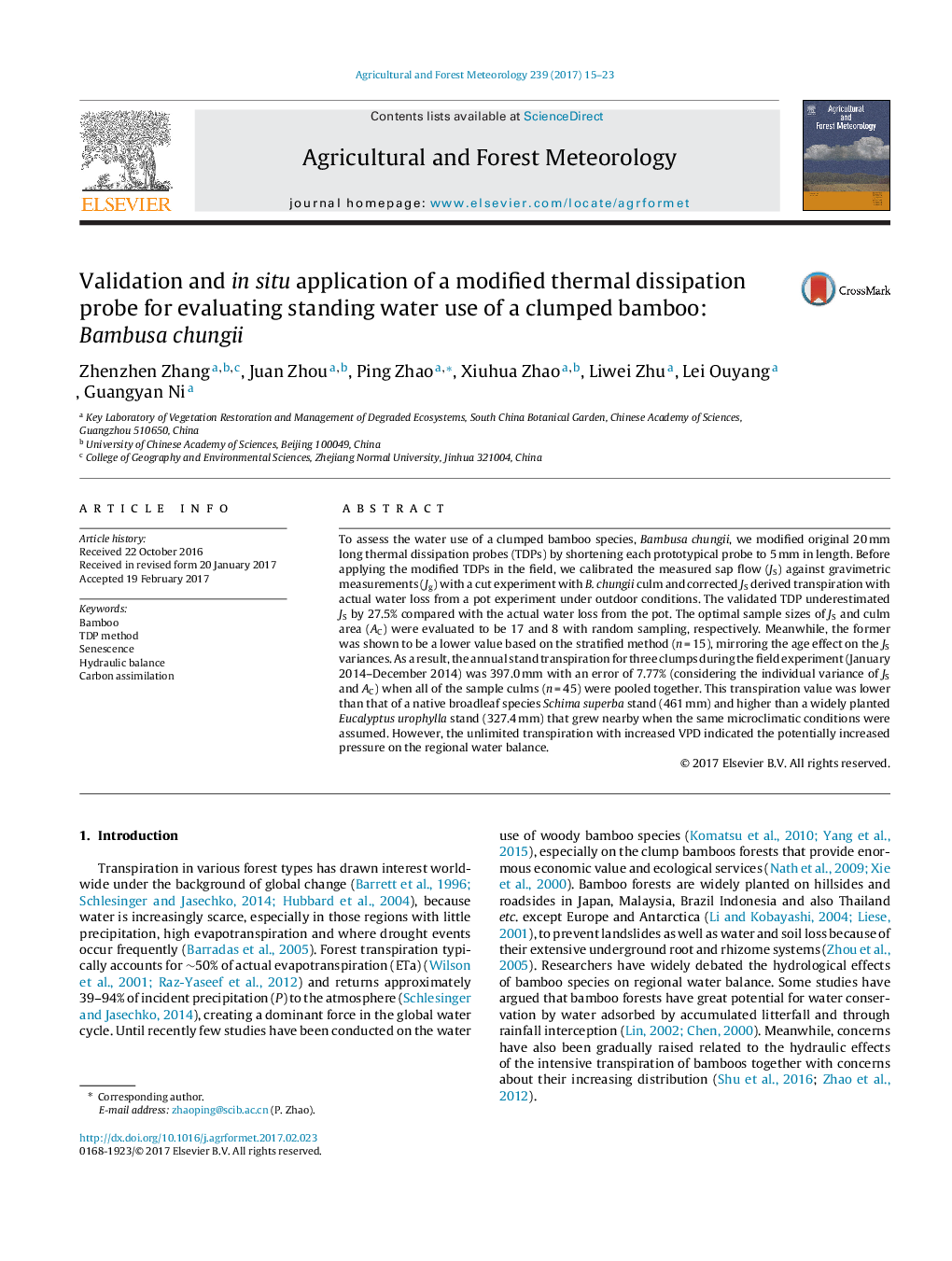| Article ID | Journal | Published Year | Pages | File Type |
|---|---|---|---|---|
| 4758921 | Agricultural and Forest Meteorology | 2017 | 9 Pages |
Abstract
To assess the water use of a clumped bamboo species, Bambusa chungii, we modified original 20 mm long thermal dissipation probes (TDPs) by shortening each prototypical probe to 5 mm in length. Before applying the modified TDPs in the field, we calibrated the measured sap flow (JS) against gravimetric measurements (Jg) with a cut experiment with B. chungii culm and corrected JS derived transpiration with actual water loss from a pot experiment under outdoor conditions. The validated TDP underestimated JS by 27.5% compared with the actual water loss from the pot. The optimal sample sizes of JS and culm area (AC) were evaluated to be 17 and 8 with random sampling, respectively. Meanwhile, the former was shown to be a lower value based on the stratified method (n = 15), mirroring the age effect on the JS variances. As a result, the annual stand transpiration for three clumps during the field experiment (January 2014-December 2014) was 397.0 mm with an error of 7.77% (considering the individual variance of JS and AC) when all of the sample culms (n = 45) were pooled together. This transpiration value was lower than that of a native broadleaf species Schima superba stand (461 mm) and higher than a widely planted Eucalyptus urophylla stand (327.4 mm) that grew nearby when the same microclimatic conditions were assumed. However, the unlimited transpiration with increased VPD indicated the potentially increased pressure on the regional water balance.
Related Topics
Physical Sciences and Engineering
Earth and Planetary Sciences
Atmospheric Science
Authors
Zhenzhen Zhang, Juan Zhou, Ping Zhao, Xiuhua Zhao, Liwei Zhu, Lei Ouyang, Guangyan Ni,
